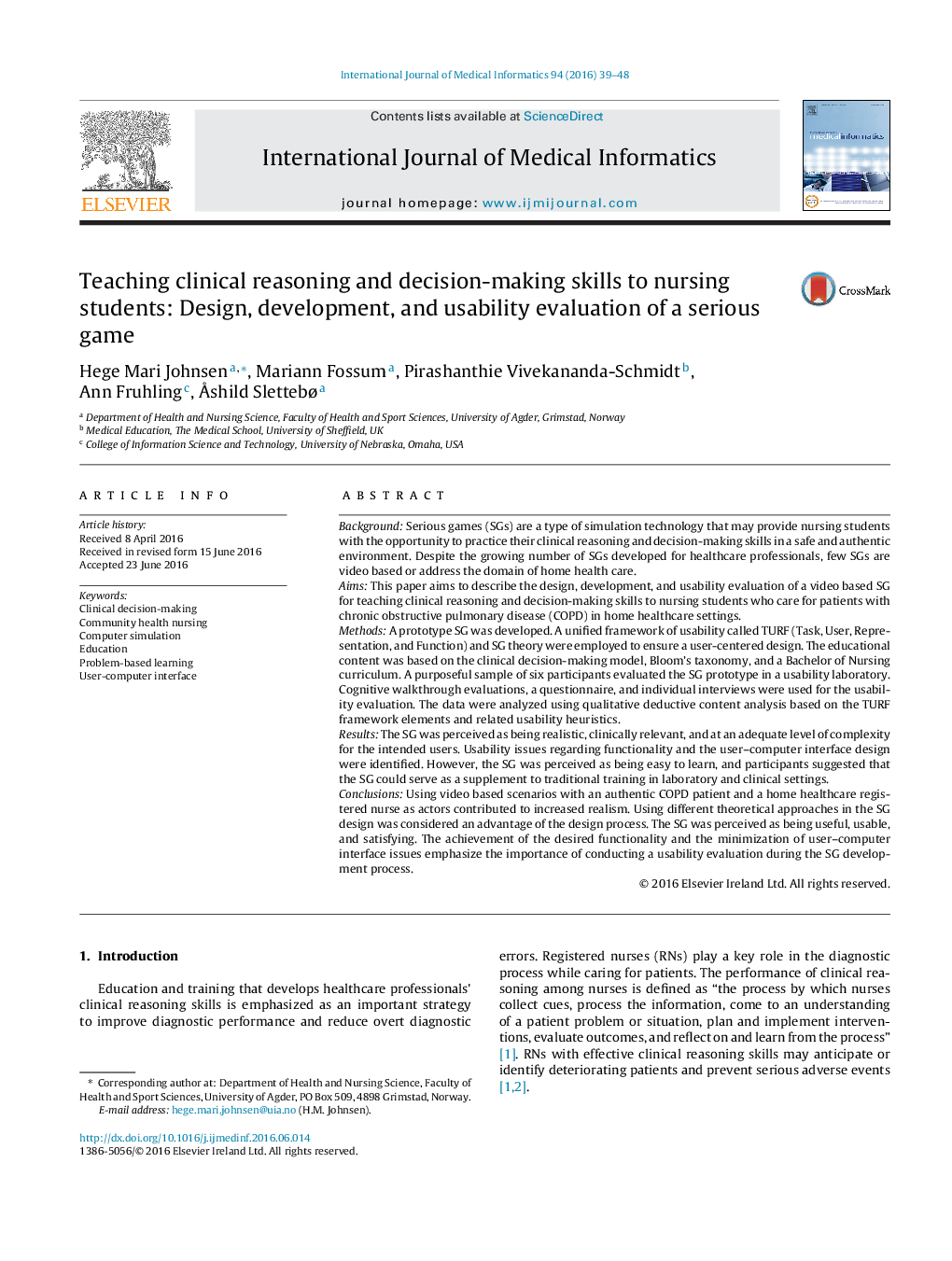| Article ID | Journal | Published Year | Pages | File Type |
|---|---|---|---|---|
| 515980 | International Journal of Medical Informatics | 2016 | 10 Pages |
•We developed an SG for teaching high-quality care to patients with COPD in home healthcare settings.•Our video based SG was perceived as being useful, usable, and satisfying.•The different theoretical approaches included in the SG design were an advantage.
BackgroundSerious games (SGs) are a type of simulation technology that may provide nursing students with the opportunity to practice their clinical reasoning and decision-making skills in a safe and authentic environment. Despite the growing number of SGs developed for healthcare professionals, few SGs are video based or address the domain of home health care.AimsThis paper aims to describe the design, development, and usability evaluation of a video based SG for teaching clinical reasoning and decision-making skills to nursing students who care for patients with chronic obstructive pulmonary disease (COPD) in home healthcare settings.MethodsA prototype SG was developed. A unified framework of usability called TURF (Task, User, Representation, and Function) and SG theory were employed to ensure a user-centered design. The educational content was based on the clinical decision-making model, Bloom’s taxonomy, and a Bachelor of Nursing curriculum. A purposeful sample of six participants evaluated the SG prototype in a usability laboratory. Cognitive walkthrough evaluations, a questionnaire, and individual interviews were used for the usability evaluation. The data were analyzed using qualitative deductive content analysis based on the TURF framework elements and related usability heuristics.ResultsThe SG was perceived as being realistic, clinically relevant, and at an adequate level of complexity for the intended users. Usability issues regarding functionality and the user–computer interface design were identified. However, the SG was perceived as being easy to learn, and participants suggested that the SG could serve as a supplement to traditional training in laboratory and clinical settings.ConclusionsUsing video based scenarios with an authentic COPD patient and a home healthcare registered nurse as actors contributed to increased realism. Using different theoretical approaches in the SG design was considered an advantage of the design process. The SG was perceived as being useful, usable, and satisfying. The achievement of the desired functionality and the minimization of user–computer interface issues emphasize the importance of conducting a usability evaluation during the SG development process.
